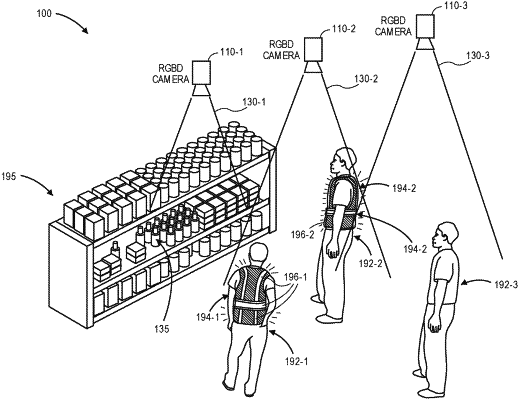| CPC G06V 10/751 (2022.01) [G06N 3/08 (2013.01); G06T 5/50 (2013.01); G06V 20/647 (2022.01); G06V 40/10 (2022.01); G06T 2207/10028 (2013.01)] | 20 Claims |

|
1. A system comprising:
an imaging device having a field of view, wherein the imaging device comprises an image sensor, a time-of-flight sensor, a computer processor and a memory component; and
a shelving unit, wherein at least a portion of the shelving unit is within the field of view,
wherein the memory component has stored thereon executable instructions that, as a result of being executed by at least the processor, cause the imaging device to at least:
capture a first visual image and a first depth image at a first time;
determine that a first number of saturated pixels within the first depth image is less than a predetermined threshold;
determine a first position of an actor at a first time based at least in part on the first depth image;
capture a second visual image and a second depth image at a second time;
determine that a second number of saturated pixels within the second depth image exceeds the predetermined threshold;
in response to determining that the second number of saturated pixels exceeds the predetermined threshold,
detect a representation of the actor in at least a portion of the second visual image;
predict a distance from the imaging device to the actor based at least in part on the second visual image; and
determine a second position of the actor at the second time based at least in part on the portion of the second image and the distance.
|